Deliriums of Colonized People: How Agriculture Has Been Subject to the Political Condition of Puerto Rico
“In colonial and modern imaginaries, the Indigenous peoples have always been defined by categories of incompleteness, absence, and lack: as societies without faith, law, and writing; societies without agriculture, domesticated animals, and resource management systems; societies without market economies and complex governmental institutions. They were societies in a state of nature, societies without history.” -Excerpt from The Political Nature of the Forest: A Botanic Archaeology of Genocide by Paulo Tavares
Throughout history, production systems, infrastructure and logistics have been studied to understand, position, and categorize human evolution. The success of thriving civilizations has been dependent on the technologies developed in parallel to their societal structures. The human-technology relationship has a symbiotic nature and behaves in an exponential cycle. The rate at which tools and technologies are created is inversely proportional to the insatiable hunger and search for human progress and creation. Technological developments can either give productive, economical and political freedom to a group of people, or be a tool of power for those who own and control it. Consequently, history has shown us (and we still see it today) how technology has been an enabler for territorial expansion of many developed countries. Through the analysis of events and data, this paper outlines and understand Puerto Rico’s agricultural development from a political perspective, and how it has been subject to colonial rule over the island since the 15th century. The same colonial condition through which imported technologies developed and flourished agriculture in the island, exploited generations of workers and farmers, and contributed to the “inability of puerto ricans to develop a nascent industry”. (Bergad, 1978)
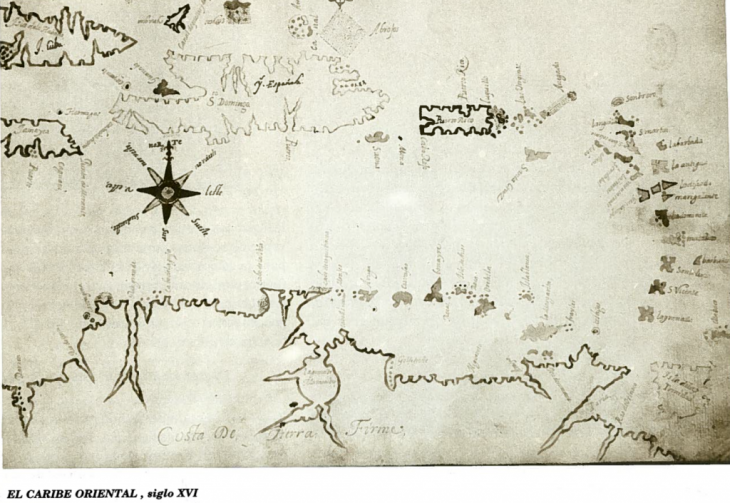
Figure 1- El Caribe Oriental Siglo XV from La Fundación, Desarrollo y Decadencia de Caparra (1508-1519)
Weeding and whitening an indigenous civilization
In 1493 under the rule of Fernando de Aragón and Isabel de Castilla, Puerto Rico became a Spanish colony, as many other islands and countries in America. A “strategic bastion of mercantile circuit” (Watlington, 2009) Puerto Rico was part of a network of naval ports among Cuba, Jamaica, La Española, and others for the transport of mineral wealth and spices extracted from each colony to mainland Spain. (Figure 1) In addition, raw material exploitation, religious indoctrination, and political power through territorial expansion were the main goals for the Spanish Conquest in America. A servile political relationship, during the Spanish rule in Puerto Rico, the native agricultural settlements of Taino peoples were divided between Spaniards as ‘encomiendas’, and eventually ‘estancias’ or ‘haciendas’, where the Taino Indians would work as slaves extracting gold and farming for the subsistence of the Spaniards. Slavery, disease, abuse and rape dramatically decreased the indigenous population in the island, what some have argued to be “the first large-scale act of genocide in the modern era”. (Stannard, 1992) This quick and abrupt decline in population, in addition to the destruction of their culture product of colonization, meant that little was passed on from the Taino’s agricultural practices onto the next generations of mestizos in the 16th and 17th century.
Pre-Columbian Conucos: An agriculture of subsistence
The knowledge on agricultural practices for pre-colonial Puerto Rico, as well as other characteristics of the Taino civilization, has been limited to the analysis of observational documents and diaries by Spanish cronistas. Researchers in different fields have held a big debate on the veracity and credibility of these sources. Nonetheless, this observational data has been cross-linked with data studies, census reports, soil composition analyses, to suggest that agricultural systems and practices in pre-colonial Puerto Rico were far more complex than what has been commonly believed. A soil analysis study on Laguna de Totuguero, in the northern coast of Puerto Rico, evidences human presence from 4000-2500 b.C, where cycles of burnt soil suggest the possibility of a complex agro-economy and production system of the aboriginal settlers before the Tainos in the island. (Pagán, 2002)
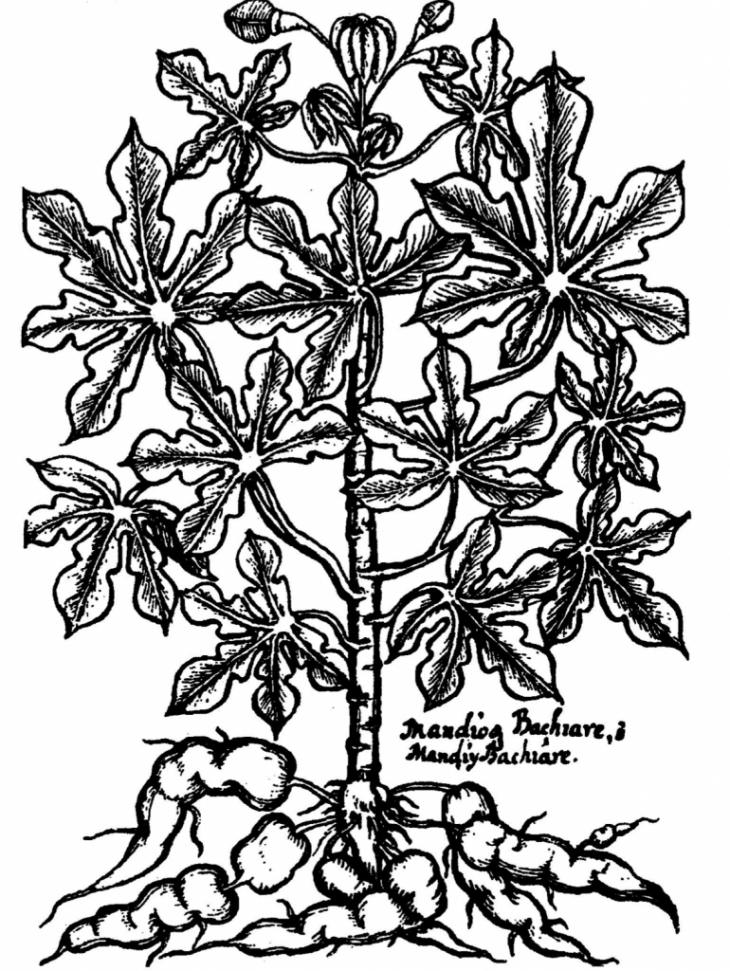
Figure 2- Yucca illustration from the 18th century. Taken from D.W. Gade, 2003.
Afterwards, through the descriptions of Pané, Las Casas, Fernández de Oviedo, and other cronistas we learn about the complex process of production, recollection, and preparation for consumption, as well as the cultivation systems used in the 1500’s Taino culture. Roza y quema and montones were the two methods used to grow a variety of roots and fruits, and in certain areas of the Conucos, they even integrated irrigation canal systems and terraces. (Las Casas, 1909) Montones were mountains of soil up to 1 meter high, which spread rainwater evenly throughout the planting, where different species of plants were grown. The principal subsistence crop was Cassava (Manihot Esculenta), but secondary crops like corn, sweet potato, yautía, and beans were also grown. (Figure 2) In addition, tobacco, cabuya, cohoba, and achiote were grown and used for instruments, pigments, and recreational purposes. Arboriculture was also practiced, with grown species including frutals like guayaba, mamey, guanabana, caimito and jobo. (Pagán, 2002)
The complexity and success of this method of indigenous farming defies the naive and undeveloped image that history has constructed of the Taino civilization in Puerto Rico. The drawing in figure 2 speculates on how a Montón cultivation could work, using descriptions and species stated in the crónicas, and parting from the logistics of ‘Hugelkultur’ and Permaculture farming. (Figure 3)
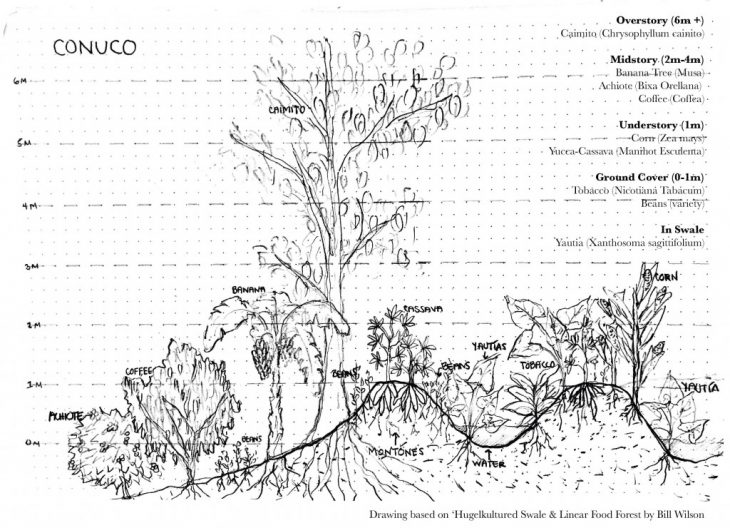
Figure 3- Drawing made by the author. Based on ‘Hugelkultured’ Swale & Linear Food Forest by Bill Wilson
Francisco Watlington notes that “based on the division of labor required for processing of food products revived from cassava (casabe), the Tainos developed a sophisticated social order comparable to the great pre-Columbian cultures of the Americas.” After official Spanish settlement in Puerto Rico in 1512, Taino population drastically lowered, agriculture slowed down, and imported cattle and goats invaded abandoned Conucos. “In sixteenth century Puerto Rico and Hispaniola, free-range livestock numbers increased exponentially, maintaining the deforested landscape by grazing and rooting… adversarial to agricultural and population growth until the second half of the sixteenth century” (Moscoso 1997). There’s no doubt that the Taíno agricultural practices in the 15th century were based on a subsistence economy, and that it was replaced by the Spaniards for an economy of resource exploitation. The Spanish invasion interrupted the rise of Taino civilization, and the imposition of a colonial economy destroyed it. (Watlington, 2009)
From local subsistence farms to mercantilist haciendas
By the 18th century, a political and economical series of events made the population grow significantly again, and with it the island’s agricultural sector. As Spain started loosing control over its territories in South and Central America, pro-independence groups throughout Cuba and Puerto Rico gathered strength. With fear of losing its remaining colonies and to diminish sovereignty ideals in the islands, the Spanish crown ratified the Royal Decree of Graces in 1815. The document “granted Puerto Rico the right for commercial ties with countries that were in good standing with Spain, and granted free land and incentives to Spanish settlers who invested in and provided technology for agricultural development in those territories” This political move brought a massive wave of Spanish and European immigrants to Puerto Rico during the 19th century.
The Real Cédula de Gracia approved slave labor in Puerto Rico, which provided European immigrants the workforce to develop agricultural plantations in the island, called Haciendas. In addition, a world rise in sugar prices at the beginning of the century stimulated the sugar cane production in these plantations. Laird W. Bergad notes that during 19th century the “agrarian history was marked by export agriculture and subsistence farming”. Spain’s introduction of Puerto Rico to the world market through the Royal Decree of Grace made the 1800’s a great moment for agricultural prosperity in the island. Crop land nearly doubled from 6% in 1830 to 14% in 1897. However, this meant that as the percentage of crop land dedicated to commercial and export purposes increased, the crop land dedicated to “local subsistence farming” decreased significantly. As of 1830, 29% of cultivated acreage were export crops, and by 1862 it increased to 51%. (Bergad, 1978) At the eve of the 20th century with global demand for sugar ever increasing, other countries like Cuba surpassed PR in the global markets.
The First Industrial Revolution in the 1800’s introduced, as Jeremy Rifkin calls it, an “infrastructural matrix” that boosted economical activity all over the world. Three new technologies: the steam press, the steam engine, and the telegraph revolutionized economy. With the introduction of railroads and steam-powered mills, production costs reduced for many companies in many countries that had the capital to invest in these technologies. (Rifkin, 2015) In this case, technology had such a big impact on society, that a new economical model started emerging. The possibility of vertically integrating logistics, production, management, and distribution of a product under one company to reduce marginal costs brought up the first hints of a pre-capitalist model.
Puerto Rico was the exception to these technological advancements. Bergad concludes, after carefully analyzing diverse haciendas production reports, that there were no signs of “major institutional support” towards farmers. The disinterest from the government and lack of capital for financing new technologies had a strong impact on most agricultural haciendas in the island, and “set a drawback for sugar production by the end of the 19th century.” (Bergad, 1978) In countries like Cuba, railroads introduced the possibility of carrying the product longer distances, expanding the crop area and plantation property, and hence expanding the production and lowering the marginal cost of the product. There were only a few haciendas in PR that could keep up with these advancements, so sugar production declined by the end of the century.
As sugar cane decreased in production, coffee became the protagonist in local farms. Bergad explains that compared to sugar, it’s a better crop for the market, or a “cash crop”. It takes approximately four years to bear fruit, but as it needs shadow to grow, it is good for intercropping with other fruits like plantain and guava. Also, coffee grows easily in almost any soil, which made it a good option for land that wasn’t suitable for other crops. Lastly, coffee has a high value in relation to its weight, and although it takes longer to harvest, it doesn’t need a complex processing and technology as sugar cane. By early 1800’s Spain and Cuba absorbed 3/4 of the volume of exported coffee from PR. By 1881, Great Britain, France, Germany, and Italy were consuming 40% of the exports. (Bergad, 1978)
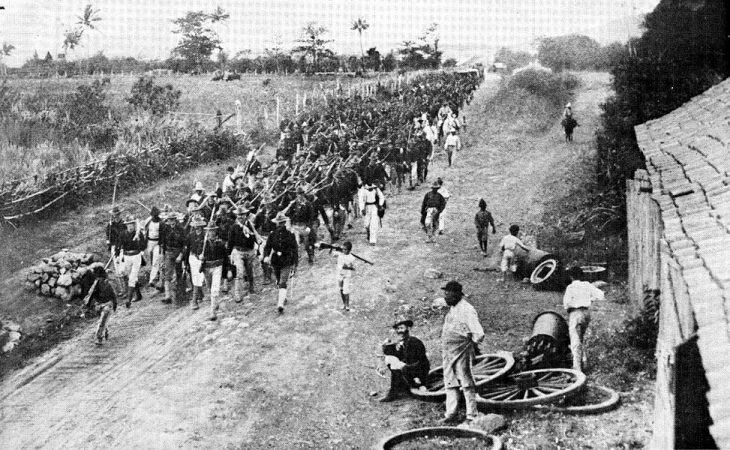
Figure 4- U.S. Invasion of Puerto Rico. July 25, 1898. N.Y. 17th Volunteer Regiment marching.
At service to the Empire: from rural matrix to capitalist plantation
In order to comprehend the rapid change experienced by the island’s agriculture sector, it is vital to understand the socio-economical context at the end of the 19th century and right before the U.S. invasion in 1898. At the eve of the 20th century, Puerto Rico’s development conditions were scarce: urbanization in the island was minimal, the railroad that would circumnavigate the island was unfinished, and the one highway that connected San Juan to Ponce (north to south) was only for military use. (Bergad, 1978) Evidently, the local government was not investing in a technological infrastructure, and an economy based on agricultural exports of sugar cane and coffee from plantations that were struggling to survive was slowly declining. Manufacture still didn’t have a strong place in the local economy. Furthermore, land ownership had a very strong impact on agricultural production, specifically right before becoming a US colony. Spanish hacendados were dominating land tenure by the end of the century, whereas small and medium sized farms, although more in quantity, owned less acreage of land. Some experts have catalogued these land tenure conditions as ones of pre-capitalist behavior.
In May 1898, during the Spanish-American War, U.S. military attacked and occupied the island. (Figure 4) Resentment from part of the local population to Spanish colony was a driving factor for minimal resistance to invasion. This group of Puerto Ricans erroneously saw the Americans as saviors who “promised liberty and prosperity” to them. (Figure 5) The shift was quick: the U.S. officially gained Puerto Rico as a territory in 1899 and established a military government. Education and economy were the two main channels for the island’s “Americanization”. School education was given in English, which caused a big dropout rate during those first years. Puerto Rican peso was changed to the US Dollar, (0.06 PRP=1 USD) increasing everything in price by 140%. Ultimately, Puerto Rico was “prohibited from negotiating commercial treaties with other nations, determining tariffs, and shipping goods to the mainland on other than U.S. carriers” (Safa, 2003)
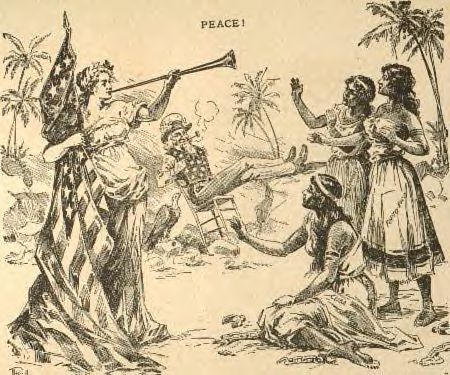
Figure 5- ‘Uncle Sam and the Goddess of Liberty Bring Freedom to Cuba, Puerto Rico, and the Philippines. 1898 newspaper cartoon
All of these events had major impacts on the agricultural sector and its future in the island. The U.S. strategies for control laid the pieces perfectly for land exploitation through policy-making. Through new tax laws, small farm owners were forced to sell their land in order to prevent debt with the government. (Bergad, 1978) Invisible investors and companies started buying massive amounts of land, and introduced new technologies (well drilling, fertilizers, and irrigation systems) to convert any piece of unproductive land to valuable agricultural plots. In addition, the Foraker Act of 1901 included PR in the US tariff system, which meant that product importation to US from PR would be cheaper for them than importing international products (in this case, specifically, sugar and tobacco).
Companies like the American Sugar Refining Company, the South Porto Rico Sugar Company, and Central Azucarera Aguirre (figure 6) introduced massive plantations, industrial monoculture, and added refineries to their economic infrastructure. In less than 5 years, Puerto Rico shifted “from a mercantile colonialism interested in the benefits that accrued for control of trade, to an imperialist colonialism with direct investment in production.” (Quintero, 1987) The domino effect caused by the U.S. invasion in Puerto Rico’s economy and social structure had its roots on the emergence of the capitalist agricultural plantation. Now farmers were not property owners, and haciendas didn’t use slave-work for production; instead, the vertically integrated plantations used wage labor. Unemployed farmers who had sold their plots of land moved from the mountains to the coastal regions in search for work in the sugar cane plantations and refineries. This “generated a totally different rural settlement pattern: clusters of houses in small villages exclusively for plantation workers”. (Quintero, 1987) The island began urbanizing.
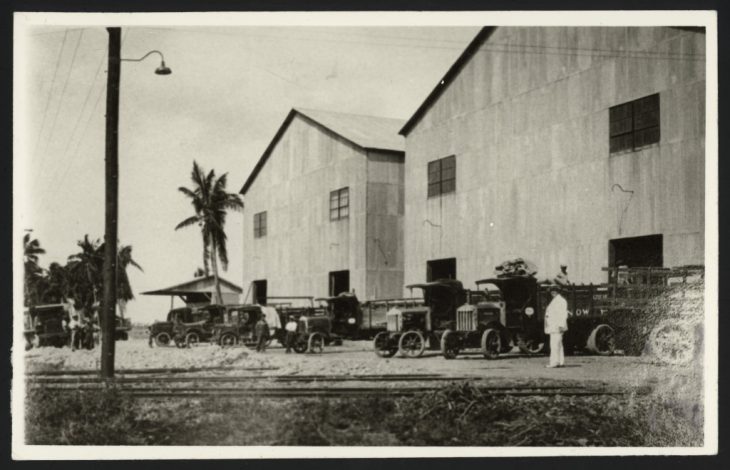
Figure 6- Central Azucarera Aguirre
Comparing the economic relationship or PR and US before and after invasion, it is clear that the US exploited most of the island’s resources to their favor. On 1897, US absorbed 19.6% of PR’s exports and supplied 18.5% of PR’s imports. By 1905, these numbers had increased to 84% and 85%, respectively. Furthermore, “the percentage of cultivated acres dedicated to commercial crops increased from 65% in 1899 to 80% in 1920. (Quintero, 1987) As capitalism intensified and new technologies developed, big companies would ensure to reduce their marginal costs. This is why, parallel to the advancement of technologies during the industrial revolution, workforce and labor became less important. From 1910 to 1934 sugar production increased more than three times, from 347,000 tons to 1,114,000 while total agricultural employment in the industry increased only from 87,643 to 92,398 workers. In 1910 25.3 agricultural laborers were needed to produce 100 tons of sugar, in 1934 only 8 were used. (Quintero, 1987)
Conclusion
In the 19th and early 20th centuries, colonial power from Spain and the U.S. defined the agricultural development of Puerto Rico, affecting directly its social structure and economy. From the 15th to the 18th century, we can see how the emergence of navigation technologies enabled the Spanish empire to expand to the Americas. The success of colonization in Puerto Rico implied the eradication of an indigenous culture, in addition to a lack of ancient and complex knowledge about agricultural systems that we will never understand completely, because the only observational data that researchers have access to are cronicas written by the colonizers. Spain’s economical influence transformed and monetized the island’s agriculture, exposing it to the world market. This brought new technologies to the island, and a diverse foreign class that forms part of our heritage today. However, Spain’s interest in Puerto Rico was purely tactical, so this agriculture of exportation without the proper investment on infrastructure was destined to fail.
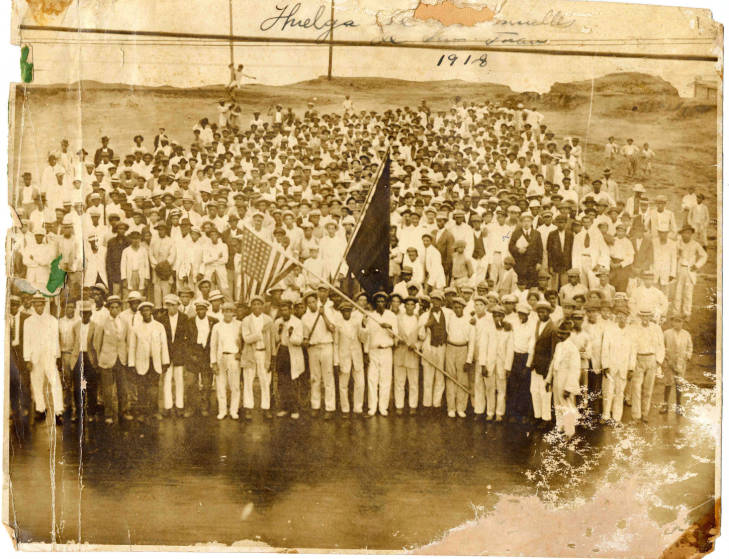
Figure 7- In San Juan, the 25th of September of 1918, the dock workers go on strike.
With further worldwide development of technologies in the First and Second Industrial Revolutions, a second colonial rule was imposed to Puerto Ricans. This new colonial regime invested on the island, and used it as a means to grow an economy of scale. The imposition of policies that favored private foreign interests on the island rapidly made of Puerto Rico’s working class a servile one. Foreign investment continued (and continues) to be the priority of the Federal Government, enforced by the local government as a means to survive. Further policies to improve economic conditions in the island after The Great Depression exempted foreign companies from paying taxes and utilities in the island. This attracted especially the electronics, pharmaceutical, and manufacturing sectors, which replaced the modern plantation by mid-century.
The U.S. and Puerto Rico’s relationship is complex in regards to social structure, cultural identity and development. To truly understand all the consequences and implications that imperial rule had on the island’s agriculture, a thorough research of the 20th century shall be realized. The fight for independency has been a rather weak opponent to the gigantic and overpowered American Empire (figure 7), but sovereignty is another interesting topic to be further explored in relation to production capacity and agriculture development. Furthermore, it is clear that more than 400 years of Spanish colonial rule followed by 122 years of imperialism in the island (and counting) have caused a deeply rooted social trauma, which impedes a society from sovereignty, self-development, self-confidence and in the end, self-sufficiency. Puerto Rico’s agricultural development from a political perspective, has been subject to colonial rule over the island since the 15th century. Angel Quintero, in his paper “The Rural-Urban Dichotomy”, brings up a very interesting sociological argumentation that I believe represents the general stance of Puerto Ricans to figures of power:
“In societies of weak plantation economies and strong garrison city, marronage is the opposite of retreating in active opposition. The urban military will not perceive the rural world as a menace, but as a world of primitive indolence. The runaways do not feel a need to organize and their anti-urban nature hampers the formation of palenques.”
References:
- Bergad, Laird W. “Agrarian History of Puerto Rico, 1870-1930.” Latin American Research Review, vol. 13, no. 3, 1978, pp. 63–94. JSTOR, www.jstor.org/stable/2503186. Accessed 20 Nov. 2020.
- Cortada, James W. The Hispanic American Historical Review, vol. 58, no. 1, 1978, pp. 138–138. JSTOR, www.jstor.org/stable/2513639. Accessed 8 Dec. 2020.
- De Las Casas, Bartolomé. Historia De Las Indias. Madrid, Imprenta De Manuel Ginesta, 1875, www.cervantesvirtual.com/nd/ark:/59851/bmcn58k6. Reproducción digital de la ed. de Madrid, Imp. de Miguel Ginesta, 1875 Originales cedidos por cortesía de biblioteca de la AECI
- EcologiaDesign. “Hugelkultur – Mounds of Fertility.” Ecologia Design / 240.344.5625, 1 Mar. 2012, www.ecologiadesign.com/2012/03/01/hugelkultur-mounds-of-fertility/. Acessed on December 13
- Luthringer, Alex J. “The Resurgence Og Agriculture in Puerto Rico.” ResearchGate, June 2017, www.researchgate.net/publication/317835110_The_Resurgence_of_Agriculture_in_Puerto_Rico. Accessed on November 28, 2020.
- —“La Abolición De La Esclavitud y El Mundo Hispano.” Edited by Jose Luis Gomez Martinez, Teoría, Crítica e Historia, México: Editorial Abeja, ensayistas.org/antologia/XIXE/castelar/esclavitud/cedula.htm. Esta Real Cédula se reproduce en edición facsimilar en David Marley, Editor. Reales asientos y licencias para la introducción de esclavos negros á la América Española (1676-1789). Accesed on 27 November, 2020
- Pagán Jiménez, Jaime,R. “AGRICULTURA PRECOLOMBINA DE LAS ANTILLAS: RETROSPECCIÓN Y ANÁLISIS*.” Anales De Antropología, vol. 36, 2002, pp. 43-91. ProQuest,
https://biblioteca.uprrp.edu:2070/scholarly-journals/agricultura-precolombina-de-las-antillas/docview/223605913/se-2?accountid=44825
- —“Ponce, Ciudad Senorial: La Ciudad Es Conocida Como La Perla Del Sur: Desarrollo Economico y Cultural De Ponce: Un Buen Ejemplo Del Desenvolvimiento De Puerto Rico En El Siglo XIX.” El Nuevo Dia, 3 July 2007, p. 3, especiales.elnuevodia.com/historiailustrada/070307/pages/page001.jpg. Retrived 27 November, 2020
- Rifkin, Jeremy. Zero Marginal Cost Society: the Rise of the Collaborative Commons and the End of Capitalism. Palgrave Macmillan, 2015.
- Rivera, Angel G. Quintero. “THE RURAL-URBAN DICHOTOMY IN THE FORMATION OF PUERTO RICO’S CULTURAL IDENTITY.” Nieuwe West-Indische Gids / New West Indian Guide, vol. 61, no. 3/4, 1987, pp. 127–144. JSTOR, www.jstor.org/stable/ 41849292. Accessed 2 Dec. 2020.
- Safa, Helen. “Changing forms of U.S. hegemony in Puerto Rico: the impact on the family and sexuality” Urban Anthropology and Studies of Cultural Systems and World Economic Development, 22 Mar 2003. Stannard, David E. American Holocaust: the Conquest of the New World. Oxford University Press, 2006.
- Tavares, Paulo. “The Political Nature of the Forest: A Botanic Archaeology of Genocide.” The Word for World Is Still Forest, 2017, www.hkw.de/media/texte/pdf/publikationen_2/publikationen_3/intercalations4_the_word_for_world_is_still_forest.pdf. Accessed 29 November. 2020.
- Watlington, Francisco. “Cassava and Carrying Capacity in Aboriginal Puerto Rico: Revisiting the Taino Downfall at Conquest.” Southeastern Geographer, vol. 49, no. 4, Dec. 2009, pp. 394–403. Biblioteca UPRRP, doi:
https://biblioteca.uprrp.edu:2092/article/364819/pdf